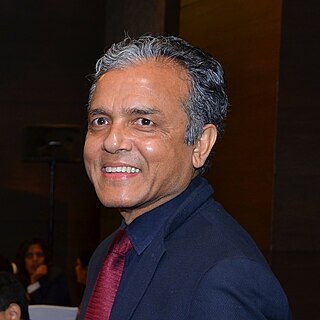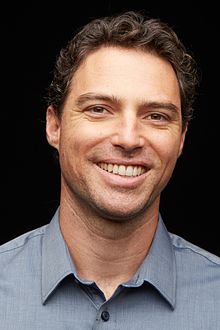Men who have sex with men (MSM) are male persons who engage in sexual activity with members of the same sex. The term was created in the 1990s by epidemiologists to study the spread of disease among all men who have sex with men, regardless of sexual identity, to include, for example, male prostitutes. The term is often used in medical literature and social research to describe such men as a group for research studies. It does not describe any specific sexual activity, and which activities are covered by the term depends on context.
Cyberpsychology is a developing field that encompasses all psychological phenomena associated with or affected by emerging technology.
A syndemic or synergistic epidemic is the aggregation of two or more concurrent or sequential epidemics or disease clusters in a population with biological interactions, which exacerbate the prognosis and burden of disease. The term was developed by Merrill Singer in the early 1990s to call attention to the synergistic nature of the health and social problems facing the poor and underserved. Syndemics develop under health disparity, caused by poverty, stress, or structural violence and are studied by epidemiologists and medical anthropologists concerned with public health, community health and the effects of social conditions on health.
Serosorting, also known as serodiscrimination, is the practice of using HIV status as a decision-making point in choosing sexual behavior. The term is used to describe the behavior of a person who chooses a sexual partner assumed to be of the same HIV serostatus in order to engage in unprotected sex with them for a reduced risk of acquiring or transmitting HIV/AIDS.
HIV/AIDS in Eswatini was first reported in 1986 but has since reached epidemic proportions. As of 2016, Eswatini had the highest prevalence of HIV among adults aged 15 to 49 in the world (27.2%).

The affected community is composed of people who are living with HIV and AIDS, plus individuals whose lives are directly influenced by HIV infection. This originally was defined as young to middle aged adults who associate with being gay or bisexual men, and or injection drug users. HIV-affected community is a community that is affected directly or indirectly affected by HIV. These communities are usually influenced by HIV and undertake risky behaviours that lead to a higher chance of HIV infection. To date HIV infection is still one of the leading cause of deaths around the world with an estimate of 36.8 million people diagnosed with HIV by the end of 2017, but there can particular communities that are more vulnerable to HIV infection, these communities include certain races, gender, minorities, and disadvantaged communities. One of the most common communities at risk is the gay community as it is commonly transmitted through unsafe sex. The main factor that contributes to HIV infection within the gay/bisexual community is that gay men do not use protection when performing anal sex or other sexual activities which can lead to a higher risk of HIV infections. Another community will be people diagnosed with mental health issues, such as depression is one of the most common related mental illnesses associated with HIV infection. HIV testing is an essential role in reducing HIV infection within communities as it can lead to prevention and treatment of HIV infections but also helps with early diagnosis of HIV. Educating young people in a community with the knowledge of HIV prevention will be able to help decrease the prevalence within the community. As education is an important source for development in many areas. Research has shown that people more at risk for HIV are part of disenfranchised and inner city populations as drug use and sexually transmitted diseases(STDs) are more prevalent. People with mental illnesses that inhibit making decisions or overlook sexual tendencies are especially at risk for contracting HIV.
Discrimination against people with HIV/AIDS or serophobia is the prejudice, fear, rejection, and stigmatization of people with HIV/AIDS. Marginalized, at-risk groups such as members of the LGBTQ+ community, intravenous drug users, and sex workers are most vulnerable to facing HIV/AIDS discrimination. The consequences of societal stigma against PLHIV are quite severe, as HIV/AIDS discrimination actively hinders access to HIV/AIDS screening and care around the world. Moreover, these negative stigmas become used against members of the LGBTQ+ community in the form of stereotypes held by physicians.
HIV prevention refers to practices that aim to prevent the spread of the human immunodeficiency virus (HIV). HIV prevention practices may be undertaken by individuals to protect their own health and the health of those in their community, or may be instituted by governments and community-based organizations as public health policies.
Since reports of emergence and spread of the human immunodeficiency virus (HIV) in the United States between the 1970s and 1980s, the HIV/AIDS epidemic has frequently been linked to gay, bisexual, and other men who have sex with men (MSM) by epidemiologists and medical professionals. It was first noticed after doctors discovered clusters of Kaposi's sarcoma and pneumocystis pneumonia in homosexual men in Los Angeles, New York City, and San Francisco in 1981. The first official report on the virus was published by the Center for Disease Control (CDC) on June 5, 1981 and detailed the cases of five young gay men who were hospitalized with serious infections. A month later, The New York Times reported that 41 homosexuals had been diagnosed with Kaposi's sarcoma, and eight had died less than 24 months after the diagnosis was made.
Education is recognized as a social determinant of health. Education has also been identified as a social vaccine against contracting HIV. Research suggests a negative linear relationship between educational attainment and HIV infection rate, especially the educational attainment of women and girls.
David DuPuy Celentano is a noted epidemiologist and professor who has contributed significantly to the promotion of research on HIV/AIDS and other sexually transmitted infections (STIs). He is the Charles Armstrong chair of the Department of Epidemiology at the Johns Hopkins Bloomberg School of Public Health. He holds joint appointments with the school’s departments of Health Policy and Management, Health Behavior and Society, and International Health, and the Johns Hopkins University School of Medicine’s Division of Infectious Diseases.

Thomas J. Coates is the Director of the multi-campus University of California Global Health Institute, a UC-wide initiative established to improve health and reduce the burden of disease throughout the world. He is Professor Emeritus at the UCLA David Geffen School of Medicine and Founding Director of the UCLA Center for World Health, a joint initiative of the David Geffen School of Medicine at UCLA and UCLA Health, He has conducted extensive research in the realm of HIV and is the Michael and Sue Steinberg Endowed Professor of Global AIDS Research within the Division of Infectious Diseases at UCLA and Distinguished Professor of Medicine. Health-related behavior is of particular interest to Coates. Throughout his career as a health expert, his theory-based research has been focused on interventions aimed at reducing risks and threats to health

The University of California, Institute for Prediction Technology (UCIPT) is a multidisciplinary organization seeking to accelerate technological research and innovations to predict human behavior and real-world events.
Wendee M. Wechsberg is an American social science researcher. Wechsberg's research focuses on developing and testing the efficacy of HIV prevention interventions among key populations of substance abusers globally. She is a recognized expert in the fields of substance abuse, gender inequality, and HIV. She developed the Women's CoOp intervention, a woman-focused behavioral HIV intervention that incorporates gender- and culture-specific skills training. Wechsberg is a Principal Researcher and Director of the Substance Use, Gender, and Applied Research (SUGAR) Program at RTI International and Director of the RTI Global Gender Center. She is also adjunct professor at the University of North Carolina at Chapel Hill (UNC) Gillings School of Global Public Health, Adjunct Professor of Psychology at North Carolina State University (NCSU), and adjunct professor in Psychiatry and Behavioral Sciences at Duke University School of Medicine.
Risky sexual behavior is the description of the activity that will increase the probability that a person engaging in sexual activity with another person infected with a sexually transmitted infection will be infected or become pregnant, or make a partner pregnant. It can mean two similar things: the behavior itself, the description of the partner's behavior. The behavior could be unprotected vaginal, oral, or anal intercourse. The partner could be a nonexclusive partner, HIV-positive, or an intravenous drug user. Drug use is associated with risky sexual behaviors.
Jeffrey T. Parsons is an American psychologist, researcher, and educator; he was a Distinguished Professor of Psychology at Hunter College and The Graduate Center of the City University of New York (CUNY) and was the Director of Hunter College’s Center for HIV/AIDS Educational Studies & Training, which he founded in 1996. Parsons was trained as a developmental psychologist and applied this training to understand health, with a particular emphasis on HIV prevention and treatment. He was known for his research on HIV risk behaviors of gay, bisexual, and other men who have sex with men (GBMSM), HIV-related syndemics, and sexual compulsivity. He resigned his positions at CUNY on July 3, 2019, following a year-long university investigation of misconduct allegations against him.
The first case of HIV in a woman was recorded in 1981. Since then, numerous women have been infected with the HIV/AIDS virus. The majority of HIV/AIDS cases in women are directly influenced by high-risk sexual activities, injectional drug use, the spread of medical misinformation, and the lack of adequate reproductive health resources in the United States. Women of color, LGBTQ women, homeless women, women sex workers, and women intravenous drug users are at an extremely high-risk for contracting the HIV/AIDS virus. In an article published by the Annual Review of Sociology, Celeste Watkins Hayes, an American sociologist, scholar, and professor wrote, "Women are more likely to be forced into survival-focused behaviors such as transactional sex for money, housing, protection, employment, and other basic needs; power-imbalanced relationships with older men; and other partnerings in which they cannot dictate the terms of condom use, monogamy, or HIV."

Swarup Sarkar is an Indian epidemiologist, public health professional and diplomat known for his work in the field of Infectious Diseases and HIV/AIDS in particular.

Debra A. Murphy is a Professor Emerita at the University of California, Los Angeles in the Department of Psychiatry.

Godefridus Johannes Petrus "Frits" van Griensven is a pioneering Dutch scientist in epidemiology, sociology and public health. Most of his work is on addressing the HIV epidemic among men who have sex with men and other HIV key populations.






